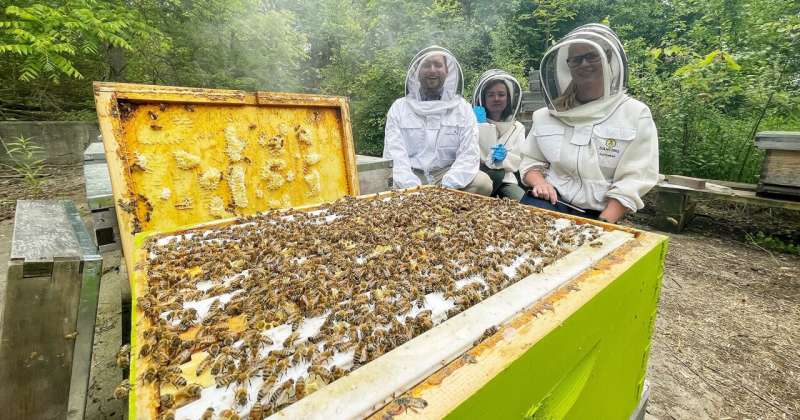Vicky Shaw, PA Personal Finance Correspondent
Tue, 27 June 2023

Concerns have been raised about struggling borrowers potentially being preyed on by loan sharks.
One in 14 (7%) of people surveyed in June said they or someone else in their household has borrowed from an unlicensed or unauthorised informal money lender who charges interest in the past three years.
The survey was carried out by Ipsos UK, among more than 1,800 people aged 18 to 75 years old across Britain.
Sacha Romanovitch, CEO of not-for-profit financial inclusion organisation Fair4All Finance, which commissioned research to shine a light on illegal money lending, said: “There is a growing consensus that structural change is needed to create a credit market that serves everyone.
“Fair4All Finance is convening support from across the financial services sector, regulators and cross-party policy makers to ensure that mainstream banks and lenders better serve millions of creditworthy, lower income individuals alongside accelerating the scale up of community finance provision.”
The organisation is concerned that the problem could grow as people look for ways to meet their living costs.
It warned that illegal money lenders may present themselves as “friends” to their customers or operate out of businesses which appear legitimate, such as some cafes or pubs.
Some loan sharks may charge people double the amount they originally borrowed and in some cases people are unaware how much they are being charged, it said.
Some borrowers had been used as “money mules” in money laundering operations, it warned, with some then losing their bank account as a result. Money muling is an illegal activity.
Fair4All Finance said borrowers using illegal lenders can end up being harassed with repeated phone calls or visits at home or work and some may be threatened with violence.
It suggested that if someone needs credit and their bank cannot help, they should consider the UK’s community finance sector, made up of credit unions and other responsible lenders.
Find Your Credit Union helps people find a credit union near them or one that works with particular employers, while Finding Finance helps people to find loan providers, Fair4All Finance said.
One in three ‘could struggle to achieve minimum living standards in retirement’
Vicky Shaw, PA Personal Finance Correspondent
Tue, 27 June 2023

Around one in three (35%) people could struggle to make ends meet in retirement, according to a report.
The average man is on track to receive £19,000 a year in retirement income per year, compared with £12,000 for the average woman, the report found.
Many of those predicted to struggle in retirement expect to be still paying rent, Scottish Widows said.
The research also indicated that the average person with disabilities will need to manage on around 61% of the typical income predicted for people without disabilities.
Scottish Widows commissioned YouGov to survey more than 5,000 people across the UK in March and April 2023.
They were asked about their preparations for retirement, and their expectations of life when no longer working.
It also used retirement living standards levels set by the Pension and Lifetime Savings Association (PLSA) to calculate the quality of lifestyle that people are set to achieve in retirement.
The standards reflect different lifestyles in terms of the amounts that retirees will have available to spend on outgoings such as household bills, holidays and transport.
Scottish Widows’ national retirement forecast (NRF) has been created to assess the potential retirement outcomes for people aged 22 to 65.
The research indicated that 35% of people are at risk of having less than the minimum needed in retirement, while a similar proportion (36%) are on course for a “comfortable” lifestyle, with enough money to cover various luxuries.
A further 18% are on course for a “minimum” lifestyle, covering the basics, with some money left over for non-essentials.
And 11% are thought to be on track for a “moderate” lifestyle, which sits between the minimum and the comfortable levels.
The report also found that living expenses are a concern for three-quarters (75%) of people and just over a fifth (21%) are cutting back on essentials.
Pete Glancy, head of policy at Scottish Widows, said: “Our new national retirement forecast paints a stark picture – one in three of us are facing the harsh reality of a retirement where we will struggle to make ends meet.
“Last year’s retirement report highlighted the impacts of the pandemic, cost of living and wage stagnation. This year the pressure seems to have intensified due to increasing inflation and interest rates continuing to climb.”
He added: “The financial services industry must get better at effectively communicating with diverse groups to build trust and ensure that people of all incomes and demographics understand how to save effectively for retirement.”
Louise Rubin, head of policy and campaigns at charity Scope, said: “Life costs a lot more when you’re disabled, and planning for retirement is a luxury many cannot afford.
“Many disabled people are denied the opportunity to get into, stay in, and progress in work, making it much harder to build up a pension.
“We need to break the link between poverty and disability and make sure disabled people have an equal standard of living.
“Tackling the disability employment gap and driving down the extra cost of disability must be made political priorities.”
Phil Brown, director of policy at People’s Partnership, which provides the People’s Pension, said: “The possibility of a retirement crisis in the next 10 years and beyond will not be averted on its own.
“The cost-of-living crisis makes immediate action impossible but we need to use the next few years to work out how to solve the very real problem of under-saving.”
A Department for Work and Pensions spokesperson said: “Automatic enrolment has transformed pension saving with more than 10.8 million workers signed up to a workplace pension and an extra £33 billion saved in 2021 compared to 2012.
“We are supporting proposals to expand this so millions more save earlier, including young people, women and lower earners, while the free guidance on offer via MoneyHelper and Pension Wise is also helping people make informed choices about their financial futures.”


